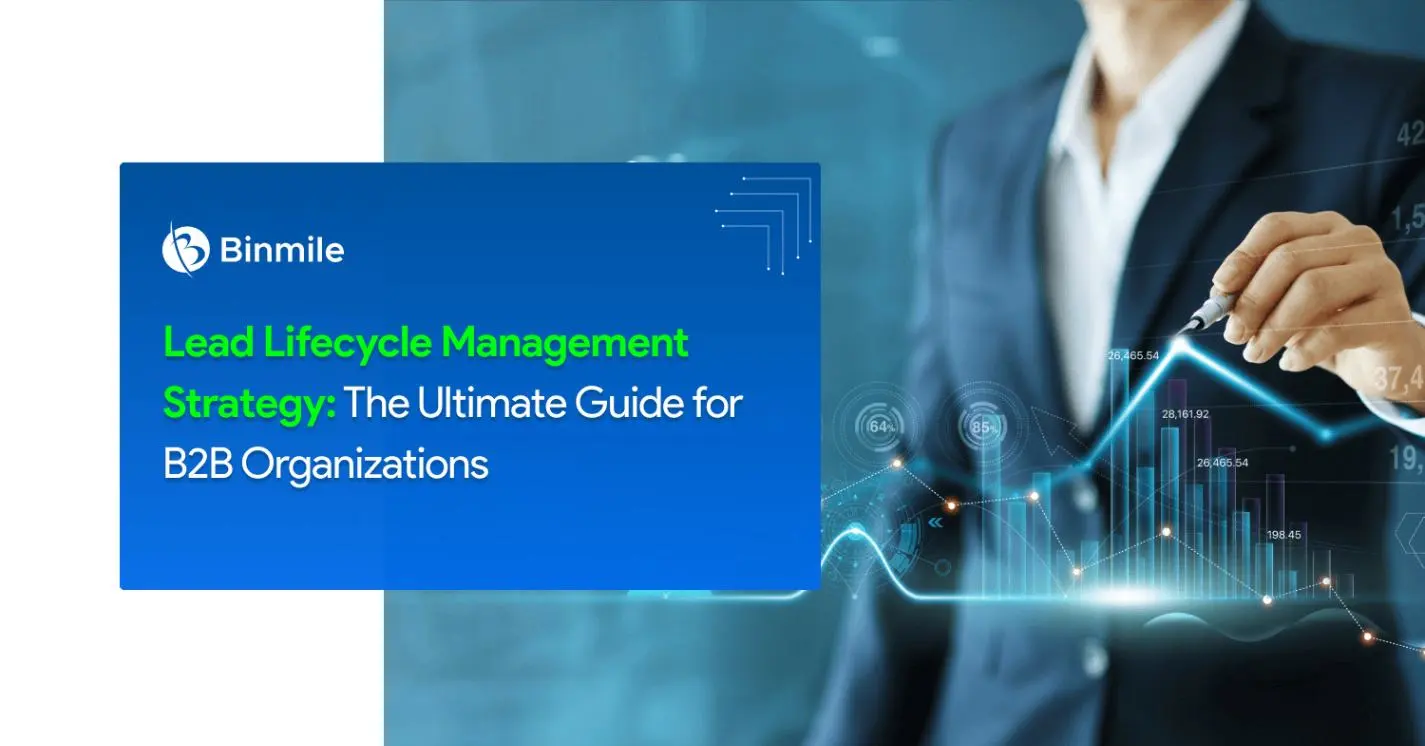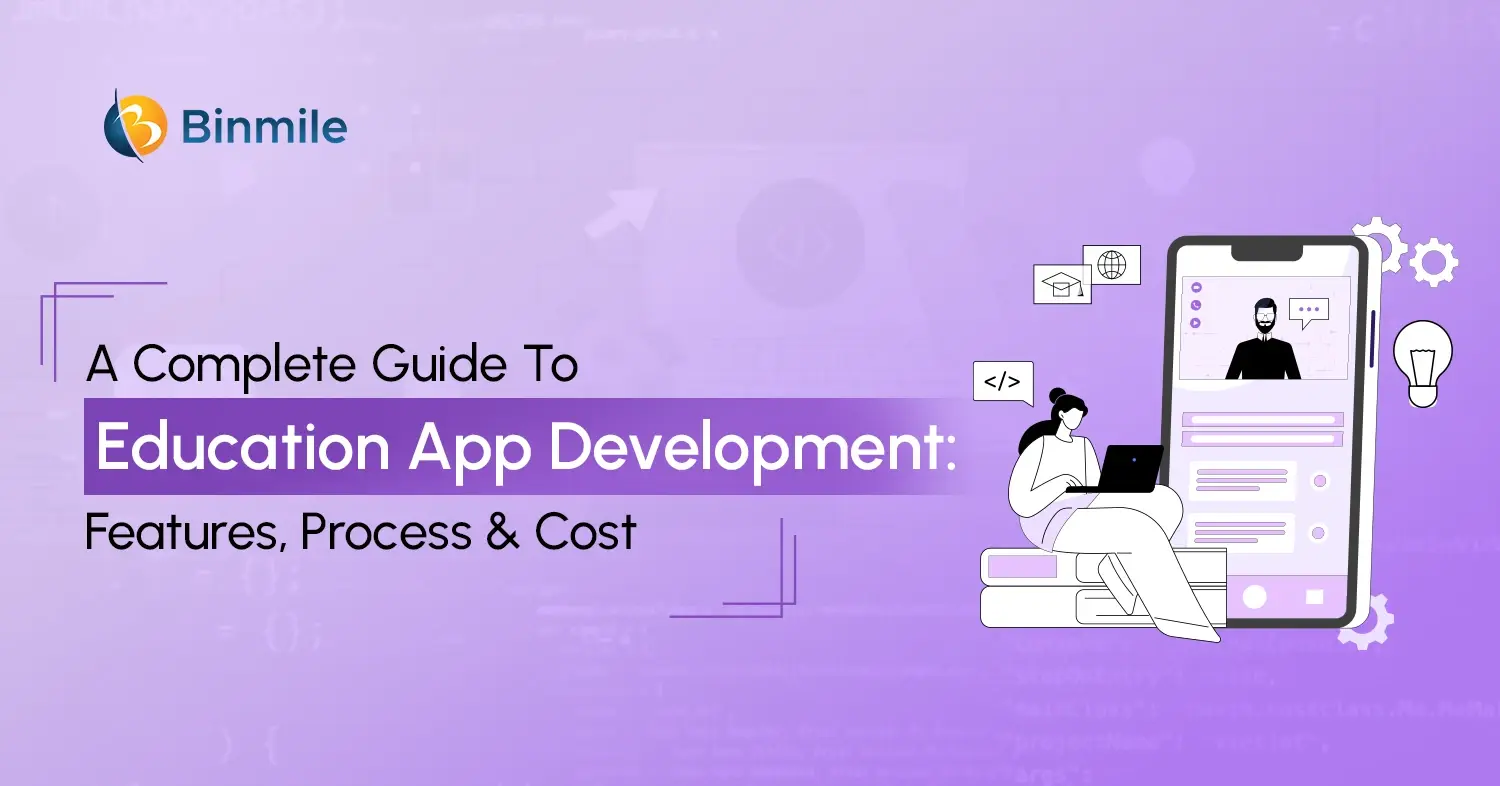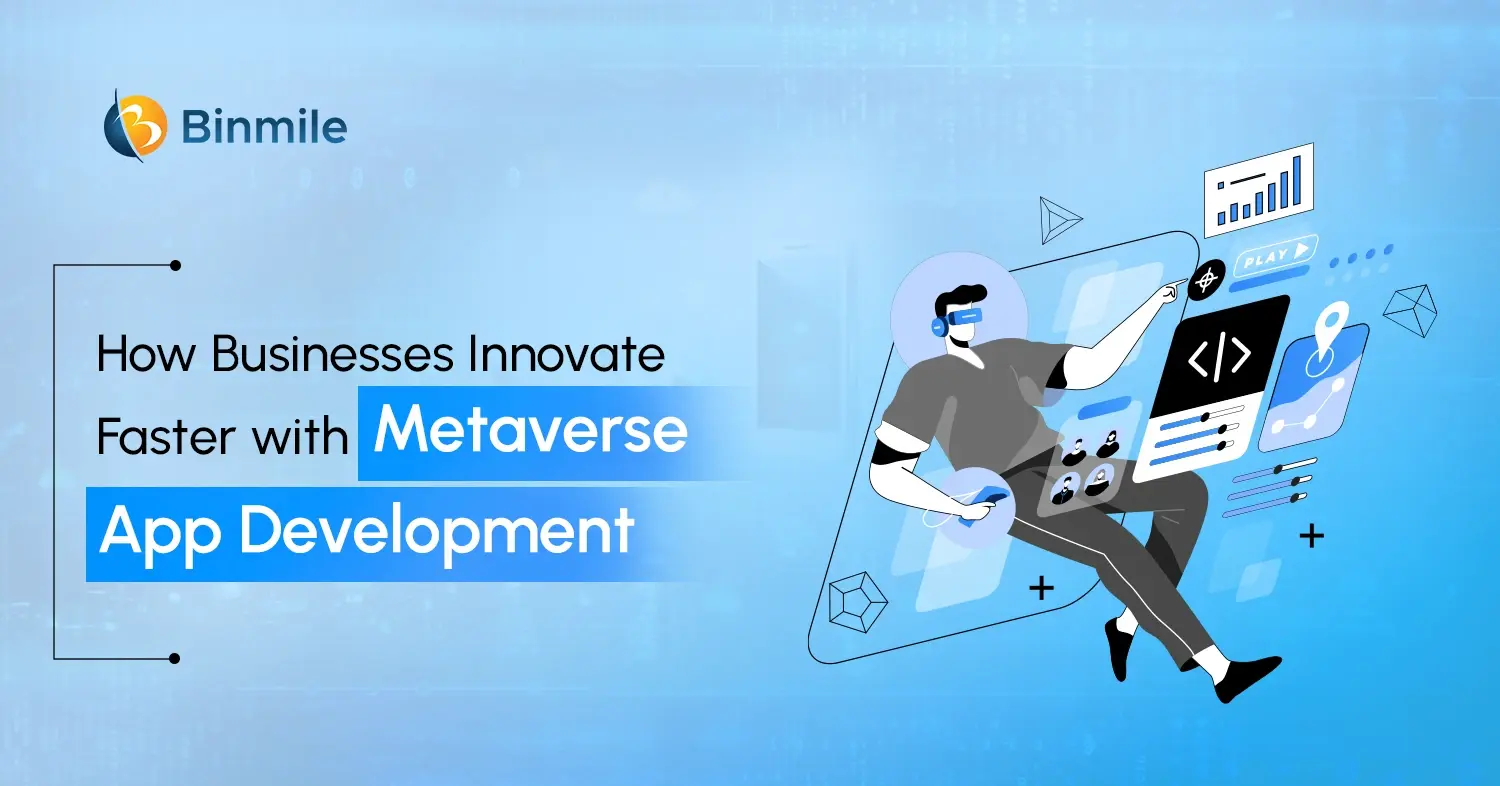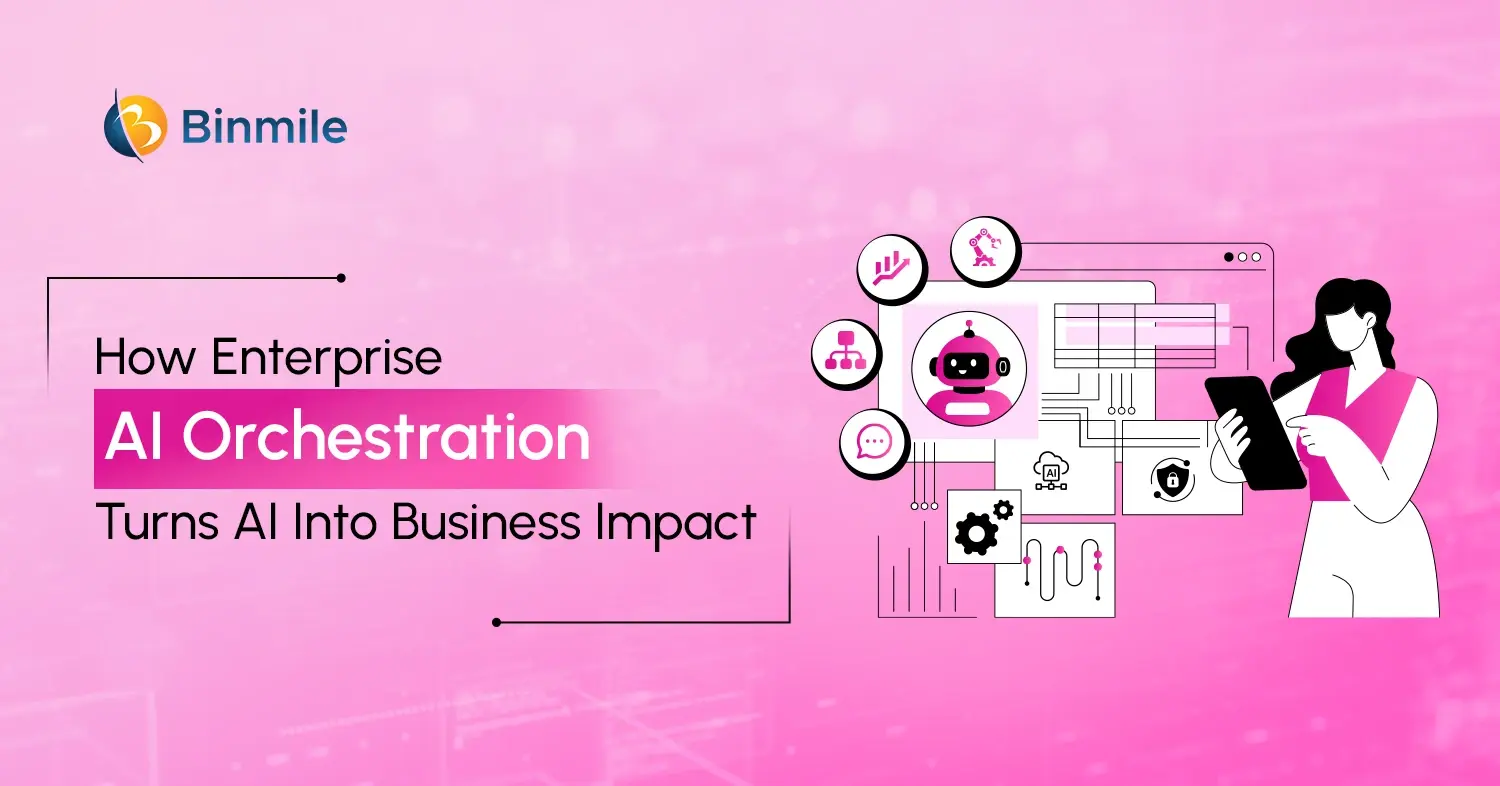Implementing lead lifecycle management is a sane business decision if seen from the standpoint of how it extends technical assistance to the organizations in analyzing their prospective leads and navigating them through the sales pipeline. It also makes sense based on how it helps businesses achieve better sustainability performance, earn lucrative advantages on their invested marketing efforts, and boost overall sales productivity.
About establishing the relevancy of lead lifecycle management in business, we have to understand that B2B organizations tie their goals to results, such as –
- Building new customers
- Offering unique services and products
- Cultivating long-term customer relationships down the line
This is where the role of lead lifecycle management (LCM) comes into picture, to help organizations lay the bedrock for years of repeat business lucratively. A comprehensive lead management process guides your B2B marketing strategies, helping you close the gaps between sales and marketing. You can examine your leads’ behavioral patterns and plan a roadmap for a lead lifecycle to enhance the likelihood of driving conversions. In fact, the report by HubSpot has revealed the significance of marketing automation tools, saying 76% of organizations in 2021 reportedly used automation tools.
An Explanatory Note to Lead Lifestyle Management
The most fundamental goal of lead lifestyle management is to ensure that inbound leads are identified, analyzed, and nurtured. It involves ensuring that these leads are converted into loyal customers down the line. You can also say it is a whole set of customer-acquisition processes that comes into action from the moment when a customer interacts with a business.
In every stage of lead lifecycle, sales and marketing both are synergized, to finally determine if a potential lead is a sales-qualified customer. Because of the efficacy of LCM and improved synergy it maintains, the successful result of lead conversions and revenue generation for an organization is made possible.
Technically speaking, the lead lifecycle is how a potential lead transits through the whole process of complete evaluation, segmentation, merits, and becoming a sales opportunity. The lead lifecycle management functions in collaboration with both marketing and sales teams, and requires meticulous data assessment to profile the status of a potential lead.
An Overview of Lead Lifecycle Stages

1. Anonymous Visitors
Anonymous prospects or visitors are those traffic counts not engaged with your brand but are being driven to it because of the positive impressions it had imprinted on them. These prospects indicate that they are less inclined to engage with your business from a commercial standpoint, but are interested to receive information about your product or service they have come to know through your ad campaigns, website blogs, etc.
An example of this phase of lead lifecycle is subscribers of your company’s blogs or newsletters.
Now, organizations try to reach out to such anonymous visitors through personalized content, messages, and call-to-action commercials. For this, they use data of visitors’ behavioral patterns and demographics to derive actionable insights. Though this is an initial or first phase of lead lifecycle, if nurtured effectively, it would turn out as leads.
Key Points to Understand Anonymous Prospects/Visitors:
- It means someone anonymous (brand or a person) has sought to know more about your brand
- Such prospects have not indicated any sign of buying your products or services
- An example of such visitors is subscribers of your company’s newsletters or blogs
2. Lead
An anonymous visitor in the lead lifecycle stage means that it has engaged with your brand, impressed by what products or services you communicate in your commercials. It is called a lead.
The main indication of such visitors turning into leads is based on their behavioral patterns, like filling a contact form, downloading an ebook, or a guide book, etc. To say the truth, these leads are not just visitors. They engage with your brand beyond a subscription signup.
A company creates a contact profile of such leads, like their name, company name, company size, and other pertinent information. Moreover, if your website is receiving multiple conversion points, define if they are a new contact as a lead based on the particular conversion points, such as chatbots, pop-ups, or forms.
Key Points to Understand Leads:
- You list your audiences as leads based on their genuine interest in your products or services. You must have enough data to shortlist such leads
- Initial indication of visitors in the prospect stage is that they show interest in your content and respond to your CTAs to initiate follow-ups
- You can profile a lead based on how it provides you with its name and information. The lead also shows keen interest in what you do.
- At the stage of filling out contact forms, it is less likely that they will go beyond data gathering about your brand
3. Marketing Qualified Lead (MQL)
At this stage of the lead lifecycle, an MQL is defined as a lead who has crossed over the threshold of filling out contact forms. They are the people absolutely willing to know more about your company’s products and services. Their genuine interest in knowing what you offer casts an impression of how much they have liked your product or service they have known through your commercials or marketing efforts and so want to know more about the same.
An MQL lead can even turn out as a paying customer in due course of time, if nurtured well or follow their journey closely. For example, check if the leads have engaged in your commercials or asked to be called back. An MQL is perhaps the most crucial lead lifecycle stage, as if handled intelligently, you can turn it into a sale-qualified lead.
Key Points to Understand Marketing Qualified Leads:
- Their interest in your products and services are genuine
- They may have gone through or downloaded your company’s case studies, product demos, etc.
- They are the leads visiting the web pages of your products more often than not, in short intervals
- An MQL could also be an indication that they have engaged with your marketing assets but don’t want to be contacted
- An MQL, according to your marketing team, is a contact marked as ready for the sales team
4. Sales Qualified Lead (SQL)
An SQL is defined as a lead ready to buy a product from your company but has not moved down to the sales section of the funnel. Such leads have not converted into a sales-qualified lead but their intention to buy your product or service is premeditated.
An example of such leads are people asking for a live demo call or a product quote, etc. They may also ask for a piece of information regarding purchase of a product.
Key Points to Understand SQL:
- SQLs are usually people who are almost on the verge of making a purchase but haven’t gone to the sales section of the funnel
- They have shown their interest in buying your product or service
- They typically ask for a quote, live demo session, or purchase information
- They are the people who are more likely to make a purchase than staying as a subscriber or an MQL
5. Sales Qualified Opportunity (SQO)
This is the holy grail of your sales team. At this stage of the lead lifecycle, people will, in all likelihood, buy a product or a service, or at least in the process of finalizing the deal. In short, they are likely to purchase a solution.
Such people may have sufficient information about your company’s product, in terms of price, key offerings, etc. and may have considered it a great solution for their existing needs.
Key Points to Understand SQO:
- Leads in SQO are in crucial bottom-of-the-funnel stage, who are likely to buy a solution
- This stage of lead lifecycle experts believe is the holy grail of the sales team
- This is the stage indicating that a person is serious in your company’s products or services
- It also signals that the leads have sufficient information about your product and are in the process of considering a feasible solution based on their needs
- This is the stage increasing the likelihood of finalizing the deal, and SQOs convert into paying customers
6. Customer
This is the final stage of the lead lifecycle, indicating that an SQO has converted into a customer. This is also the stage where the onus lies on your customer service team to maintain a good relationship with the customers, ensuring they are happy with the product they have purchased.
Key Points to Understand Customers:
- It indicates that an SQO has converted into a loyal customer
- This stage also signifies the collective efforts of marketing and sales teams in the acquisition of customers by guiding them to a final sale
- This stage also indicates that you don’t have to nurture your lead anymore. However, marketing efforts should ensure that customers are happy with service
Lead Lifecycle Management and Its Various Phases
First Phase
Attract anonymous visitors using valuable information communicated through your company’s blogs, guides, social media ads, email marketing, etc. Encourage them to share key details, like name, email id, designation, company’s name, etc. You can also make use of sources, like webinars, popup forms, email CTAs to drive visitors and collect their data for marketers to shortlist the leads worth pursuing.
Second Phase
This is the phase of lead tracking and lead enrichment to help your company identify potential sources for leads (i.e. inbound or outbound). It involves measuring their behavioral patterns and determining if they stand sale-qualified. Lead enrichment means you are verifying, correcting, and updating lead data, like contact details, company size, industry, etc. in a database. This is the compilation of crucial information about potential leads before you send the data off to the sales team for further process.
Third Phase
In this phase, analyze those leads with a higher chance for being converted into loyal customers. Call it a lead qualification process that analyzes a lead’s intent to buy a product. It should also be based on budget and business needs of a prospect, purchase timeline, etc. The reason why this phase is important is because it helps an organization avoid chasing the leads that don’t fit in their pre-identified customer profile.
Fourth Phase
Qualified leads are assigned to the sales team for further process. This phase is known as lead distribution. In which leads are routed or assigned to the right sales development reps either by manually or using automation software.
Fifth Phase
It involves engaging and educating visitors repeatedly about your company’s products or services using different marketing activities. A B2B email marketing agency plays a crucial role in lead nurturing activities, helping businesses move prospects through the sales funnel until they are ready to make a purchase. In this phase, a brand engages visitors using different types of events, like webinars, newsletters, digital ads, and more. One of the upsides of this phase is increasing brand awareness among target leads. It maintains engagement with leads yet to purchase a brand’s product or service.
Read More: Supply Chain Risk Management Software
How Does Marketing Automation Help in Lead Lifecycle Management?
Marketing automation tools help companies optimize their lead management efforts by automating repetitive marketing workflows and building personalized customer experiences.
These tools can increase overall efficiency and business productivity, from collecting crucial data about potential leads to tracking them seamlessly and nurturing them. Therefore, the role marketing automation plays in building a robust lead lifecycle management strategy is significant. Here is the breakdown of marketing automation and how it helps in lead lifecycle management.
1: Data Collection
Marketing automation tools help your company gather crucial lead data at different sales funnel stages. These tools ensure progressing profiling of potential customers through the functionality called ‘dynamic forms’. These tools serve in the creation of detailed profiles of potential customers to drive personalized communication, boost content distribution, and improve lead conversion.
2: Lead Enrichment
Using marketing automation helps companies with streamlined lead enrichment processes. They can have high-quality, fully verified and updated lead data in the system. Automation also ensures that the data regarding leads is actionable. These tools facilitate automation of lead enrichment, ruling out manual and time-consuming data entry for quality leads generation.
3: Lead Nurturing
Marketing automation results in an optimized lead nurturing process for companies. For example, using email marketing automation would facilitate sending customized emails to the leads based on their previous behaviors, like filling out forms or downloading whitepapers, etc.
The automation tools make use of stored lead data for personalized emails. Companies can also link marketing automation with CRM to facilitate lead tracking for both sales and marketing teams, nurturing leads not yet willing to convert.
In addition, marketing automation tools offer lead segmentation that you can use to classify leads based on their attributes, like demographic, job designation, industry, etc. As a result, it helps create comprehensively personalized nurturing campaigns, increasing the likelihood for lead conversion.
4: Lead Routing
Companies using marketing automation tools can automate the lead routing process efficiently. For this, they assign analyzed leads to the right sales reps, thereby enhancing the chance for lead conversion. The tools relegate the potential leads to the sales reps according to pre—defined parameters, including source, geography, experience and expertise of sales reps, etc. In turn, the whole processes are streamlined, ruling out the need for a manual lead routing approach.
Winding Up
Lead lifecycle management plays a significant role in B2B organizations. It helps them achieve improved sustainability performance and overall sales productivity eventually. A compressive lead lifecycle management process helps your company close the gaps between sales and marketing teams. It drives lead conversion to make profits in the long run. From helping you generate revenue to generating high-quality leads, building brand identity, and boosting awareness, lead lifecycle ensures its viability beyond the words to measure.
Building an effective lead lifecycle management strategy depends on how a company utilizes its resources and available lead data. Besides, it also relies on how the company engages with potential leads. So, utilizing marketing automation tools is beneficial for companies. These tools help them derive value from lead management efforts and manage the lead lifecycle at scale.
At last, consider Binmile a qualified resource for the best marketing automation services. The company is world-famous for its ability to transcend customers’ expectations. The futuristic solutions the company builds help businesses explore various avenues for growth and competitive advantages.









